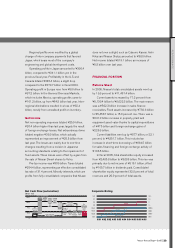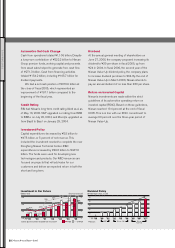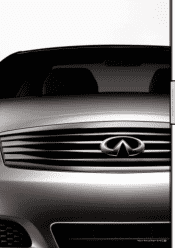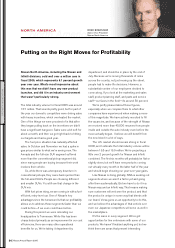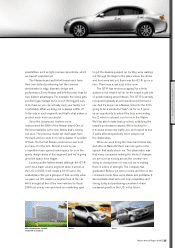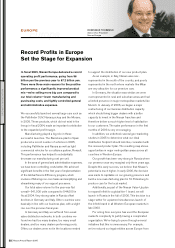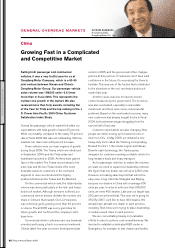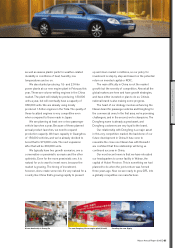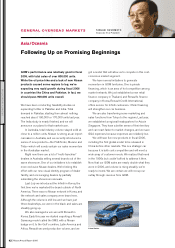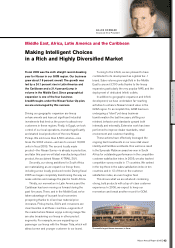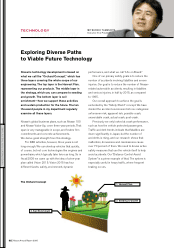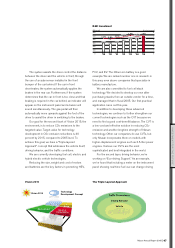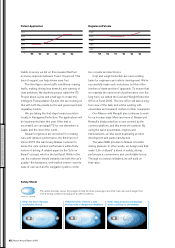Nissan 2006 Annual Report Download - page 41
Download and view the complete annual report
Please find page 41 of the 2006 Nissan annual report below. You can navigate through the pages in the report by either clicking on the pages listed below, or by using the keyword search tool below to find specific information within the annual report.
Nissan Annual Report 2005 39
thirty-six to fifteen. That eliminates administrative
overhang and frees up resources to better serve our
customers with products and services that are
relevant to them.
Regional business units are part of a new
business model meant to cope with this complicated
and costly market. The arrival of new countries from
Eastern and Central Europe into the European Union
only reinforced the necessity to create a new
business model.
Instead of having a sales company in every
national market, we decided to use regional hubs.
The Central and Eastern European hub, which is
located in Hungary, for example, oversees branch
offices in Poland, Slovakia and the Czech Republic in
addition to its own market. We implemented the
same organization in the Nordic region—using
Finland as a base for Denmark, Norway and Sweden.
In the east, a company in Russia handles our
business needs in the Ukraine and Kazakhstan.
In each of these cases we have increased our
effectiveness in sales and marketing and, by
operating with streamlined and standardized systems
and processes, improved our administrative efficiency.
Nissan’s brand recognition in Europe is still low,
but improving. In the past, too many of our products
attempted to copy mainstream European brands
and fell short in expressing Nissan’s personality.
That’s changing.
We’ve reinforced the 4x4 SUV side of our lineup
with the Pathfinder and the Navara pickup, giving us
the strongest and fastest-growing range in Europe.
We are also the clear market leader in pickup
trucks—four out of every ten pickups sold in Europe
is a Nissan. Murano is highly successful as Nissan’s
first crossover in the European market and will soon
be followed by other cars in this profitable segment.
In the fall of 2006 we will also launch an all-new
light-duty truck, the New Cabstar. This is a real event
for our chassis-cab plant in Avila, Spain, as well as
for our expanding light-duty truck network.
In the passenger car segments, many of the more
traditional models, such as Tino, Almera and Primera,
entered into their last months on sale. But the
renewal of the lineup has already started with the
new Nissan Note, manufactured in Sunderland, UK
and launched in February 2006. Its first months of
sales have exceeded expectations.
The excitement and buzz surrounding the brand
is growing as we approach the Paris Motor Show in
September, where we will reveal the production
version of the Qashqai crossover concept car. This
vehicle will play an important role in defining the new
face of Nissan in Europe.
Our Alliance with Renault continues to present
valuable opportunities for expanding synergies in
many areas ranging from shared services, IT, sales
finance with Renault Credit International, light
commercial vehicles and diesel engines. The latest
initiative in this field will see the new luxury diesel
engine developed by the alliance being fitted in
Infiniti cars in Europe.
GROWTH MOMENTUM
Pathfinder Murano Note


